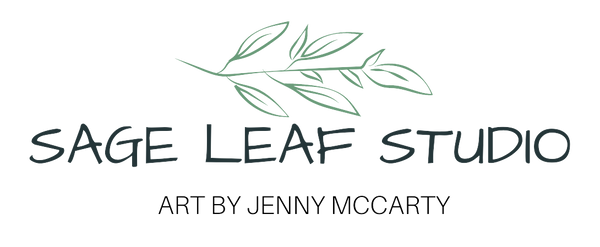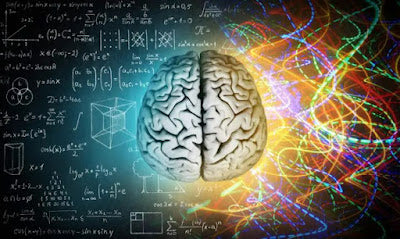As you look into the new year and plan your New Year's Resolutions, ask yourself what habits are helping you and which are hurting you? Exercise, sleep, food, drugs, alcohol, what about creativity? Your brain on creativity... it can be beneficial in all aspects of your life.
Creativity, while often thought to describe the process of artists, is actually used in any kind of problem solving resulting in a novel and valuable solution. In fact, by using traditional forms of creativity, such as painting, writing, sculpture, performance, or any other art, you can train your brain to think more creatively in other aspects of your life. In an ever-changing and complex world, creative problem solving becomes more and more necessary. Read more about the benefits here.
When you're being creative, your brain undergoes an amazing transformation. Neurons light up in beautiful patterns, as in time with a symphony of song. Better yet, just like frequently working muscles, the more you put your brain through creative training, the stronger, more coordinated, and balanced it becomes.
Ready to nerd out on the science? This is what your brain looks like on creativity:
1. Activation of Multiple Brain Regions: Creativity doesn't have a designated corner in your brain. It's a collaborative effort of many brain regions. Despite mainstream thinking that only the right brain is involved in creativity, both the left and right hemispheres are activated, and the connections between them become stronger with creative thought.
2. DMN Takes the Stage: Coincidentally similar to some drugs that achieve the same results, The DMN, or Default Mode Network, is the daydreaming part of your brain. It activates when your mind wanders, helping you reflect on yourself and envision future possibilities. This is crucial for generating novel ideas and free-flowing creativity and, when stimulated, has even been shown to be valuable for healing past traumas.
3. The Executive Network Refines Ideas: Your Executive Network, usually active during tasks requiring attention and focus, also activates during creative pursuits. It helps evaluate and refine those initial creative sparks from the DMN. It's like the editor in your brain, ensuring your ideas make sense and are workable.
4. Divergent and Convergent Thinking: Creative thinking often involves both divergent thinking (coming up with multiple possible solutions) and convergent thinking (finding the single best solution to a problem). Different neural pathways are activated for these distinct thinking types during creative activities.
5. Neurotransmitters at Play: Dopamine, the neurotransmitter associated with pleasure and reward, plays a role in enhancing cognitive flexibility and divergent thinking. When you're in a state of creativity, your brain releases more dopamine, making the process enjoyable and motivating.
6. The "Aha!" Moment: The anterior superior temporal gyrus (aSTG) in your temporal lobe is responsible for those brilliant "Aha!" moments. There's a burst of high gamma activity in this area just before you experience an insight and when you are in the act of creating art.
7. Brain Plasticity: Your brain is incredibly adaptable. Engaging in creative activities can further boost this neuroplasticity, allowing you to learn, adapt, and create with more ease. It's like flexing a mental muscle.
Lastly, this post wouldn’t be complete without talking about flow state. During flow state, the points above are achieved at a heightened level.
8. Flow State: Flow state is when you find yourself fully immersed and intensely focused on a particular activity, usually one that you deeply enjoy and presents the perfect level of challenge for your skill level (definition by neuroscientist, Mihali Csikszentmihalyi). You’re absorbed. Time no longer exists. You’re almost in a trance.
The more challenging the task, the higher the likelihood of inducing a flow state. Image: https://discoveryinaction.com.au/how-to-achieve-a-flow-state/
Flow is often and easily found in creative activity - painting, writing, playing music, theater - but it is also found in high performance sports such as dance, biking, running, or skiing.
Research shows that the benefits of flow state extend beyond the creative activity itself. People in flow state often experience heightened creativity, improved problem-solving capabilities, and a profound sense of satisfaction, enjoyment, and compounding motivation after being in flow. This state of hyper-focus has been extensively studied across various disciplines, and ultimately shows that finding flow has a positive impact on cognitive functions and overall well-being. Ultimately, embracing flow state presents a pragmatic, natural, and substance-free approach to maximizing productivity and achieving a heightened sense of accomplishment in professional and personal pursuits.
There is also a ton of research that shows that flow state, in and of itself, changes brain activity. Some studies show that the prefrontal cortex of the brain, the portion of the brain associated with “ego,” decreases substantially in activity during flow state. This may explain why people experience a loss of self-consciousness and distorted sense of time during flow. Other research shows that flow increases synchronicity among brain regions and activates regions of the brain involved in higher thinking. Lastly, research suggests that there is a spike in dopamine, a pleasure and motivation brain chemical, when you experience flow. Many of these physical changes mirror 1-7 above, but in heightened ways.
As the New Year beckons, and with it, resolutions, critically examine what serves your personal goals. Amidst the familiar considerations of better exercise, sleep, and nutrition, consider adding a creative habit to your routine. Creativity is more than just a paintbrush or a piece of paper—it's a toolbox for novel problem-solving in every sphere of life. By honing traditional creative forms like painting, writing, sculpting, theater, sewing, woodworking, and so many other art forms, you can train your brain for peak performance in diverse situations. In our rapidly changing world, creative thinking becomes an essential skill. You know the benefits, now go find your creative flow.
Check out this blog post for more information on the benefits of creative habits on your problem solving, innovation, perception of possibilities and diverse ways of thinking, communication, and ultimate life fulfillment. If you’re interested in developing a creative habit, use our free 30 Day Creativity Cheat Sheet to guide your way. It just takes 15 minutes a day to build your creative mindset and elevate your life.
Lastly, if you liked this post, send it to a friend or family member who you think might also enjoy it.
Have a sage day and don’t forget to do something for you today!



